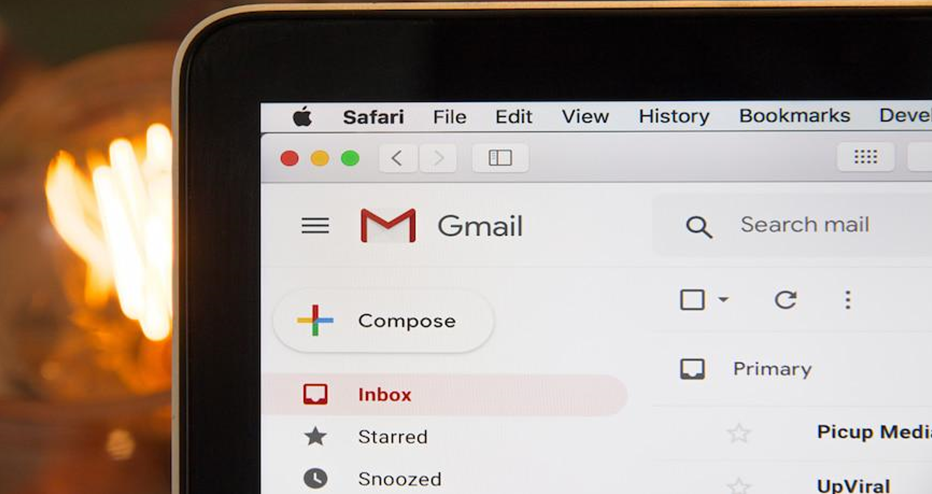Cold email outreach is a powerful and effective method used by businesses and individuals to establish connections, promote their products or services, and expand their network. In this article, we will delve into the concept of cold email outreach, its benefits, and provide you with a step-by-step guide on how to craft compelling cold emails that yield results.
What is Meant By “Cold Email Outreach”?
Cold email outreach is a proactive strategy that allows you to initiate contact with potential clients, collaborators, or partners. Unlike warm emails, where there’s an existing relationship, cold emails start from scratch. They serve as the first touchpoint and aim to capture the recipient’s attention.
Benefits of Cold Email Outreach
Cold email outreach offers several advantages:
* Wider Reach: You can connect with individuals outside your immediate network.
* Targeted Approach: You can tailor messages to specific segments or industries.
* Cost-Effective: Cold emailing is more affordable than some traditional marketing methods.
* Direct Communication: You can directly reach decision-makers.
* Opportunity Creation: It creates opportunities for partnerships, collaborations, and sales.
Crafting Your Cold Email: A Step-by-Step Guide
Crafting a compelling cold email requires careful planning, personalization, and persuasive writing. Here’s a detailed step-by-step guide to help you create cold emails that stand out and generate positive responses:
Defining Your Objective
At the outset of crafting a cold email, it’s imperative to establish a clear and focused objective that guides the entire communication. Your objective shapes the content, tone, and direction of the email, ensuring that your message aligns seamlessly with your intended purpose. Whether you’re introducing yourself, seeking a partnership, or sharing valuable insights, a well-defined objective helps you stay on track and prevents the email from veering off-topic. Before you even begin drafting, take a moment to crystallize what you aim to achieve through this email. This might involve contemplating the action you want the recipient to take, the impression you want to leave, or the information you want to convey. By having a precise objective in mind, you can craft a cold email that is focused, impactful, and resonates with your recipients in a way that increases the likelihood of achieving your desired outcome.
Researching Your Recipients
In the realm of cold email outreach, thorough research of your recipients serves as a cornerstone for forging meaningful connections. Taking the time to delve into their professional backgrounds, interests, and recent activities unveils invaluable insights that enable personalization and relevance in your communication. By scouring their social media profiles, blogs, articles, and even interviews, you gain a deeper understanding of their expertise, pain points, and perspectives. This knowledge equips you to establish common ground, demonstrate genuine interest, and create a foundation for engagement. Through this meticulous research, you’re not only able to tailor your message to resonate with their specific needs but also build a bridge of authenticity that can set your cold email apart from generic outreach attempts. This personalized approach acknowledges the recipient’s individuality and contextualizes your message, increasing the likelihood of sparking their interest and forging a connection that goes beyond a mere transactional exchange.
Writing an Engaging Subject Line
Crafting an attention-grabbing subject line is essential for encouraging recipients to open your cold email. Follow these steps to create subject lines that intrigue and entice:
1. Be concise: Keep your subject line brief and to the point. Aim for around 5-7 words to make it easily scannable.
2. Personalization: Include the recipient’s name or company name to add a personalized touch.
3. Curiosity: Spark curiosity by posing a question or hinting at valuable information inside the email.
4. Relevance: Make sure your subject line aligns with the email’s content. Misleading subject lines can lead to a negative impression.
5. Urgency: Use words that convey a sense of urgency, but avoid overly aggressive language.
6. Benefit-oriented: Highlight the benefit or value recipients will gain by opening your email.
7. Numbers and stats: Numbers stand out and suggest specific content, like “5 Strategies for…”
8. Emojis: Occasionally, a well-placed emoji can add a playful or eye-catching element to your subject line.
9. Personalization Tokens: Some email platforms allow you to insert dynamic content, like the recipient’s name, into the subject line.
10. Avoid spam triggers: Steer clear of words like “free,” “limited time offer,” and excessive punctuation, as these can trigger spam filters.
11. A/B testing: Test different subject lines to see which ones perform best. Experiment with wording, length, and tone.
12. Emotional appeal: Appeal to emotions like curiosity, fear of missing out (FOMO), or the desire to learn something new.
13. Use power words: Incorporate strong, positive words like “discover,” “exclusive,” “proven,” and “transform.”
14. Segmentation: Tailor subject lines to different audience segments, making them more relevant to specific recipients.
15. Avoid all caps: Using all capital letters can appear aggressive and spammy. Use proper capitalization.
Crafting an engaging subject line requires creativity and an understanding of your recipients’ interests. Experiment with different approaches to discover what resonates best with your audience, and always prioritize authenticity and relevance.
Providing Value Proposition
The crux of a successful cold email hinges on delivering a compelling value proposition that resonates with your recipients’ needs and aspirations. Your value proposition is the beacon that guides recipients toward understanding how your offering can enhance their lives or address their challenges. By succinctly highlighting the benefits and solutions your product, service, or proposition brings to the table, you’re not just showcasing features, but demonstrating how you can genuinely make a positive impact on their endeavors. It’s imperative to be specific, transparent, and tailored in your approach, ensuring that your recipients can immediately perceive the worth you’re offering. This value-centered approach establishes credibility and sets the foundation for building trust, the cornerstone of any successful business relationship. A well-crafted value proposition doesn’t just promote a product; it speaks to the recipient’s needs, challenges assumptions, and persuades them that your solution is a step toward their goals. It’s this resonance that turns a cold email from a generic outreach into a meaningful exchange of potential mutual benefits.
Adding a Clear Call to Action
A well-crafted Call to Action (CTA) is a vital component of your cold email, guiding recipients on the next steps to take. Follow these steps to create a clear and compelling CTA that encourages engagement:
1. Be direct and specific: Clearly state the action you want recipients to take. Use concise language that leaves no room for confusion.
2. Use action verbs: Begin your CTA with strong action verbs like “Schedule,” “Download,” “Register,” or “Request.” These verbs convey a sense of urgency and action.
3. Highlight benefits: Explain the benefits of taking the action you’re proposing. Recipients should understand the value they’ll gain from clicking the CTA.
4. Create a sense of urgency: Encourage immediate action by adding urgency. Phrases like “Limited Time Offer” or “Act Now” can spur recipients to take action promptly.
5. Keep it visually distinct: Use formatting such as bold or color to make the CTA stand out from the rest of the email content.
6. Single and clear: Focus on a single, well-defined CTA. Presenting multiple CTAs can confuse recipients and dilute the impact of each.
7. Position strategically: Place the CTA prominently within the email, ideally near the end or after explaining the value proposition.
8. Convey the process: If the action involves multiple steps, provide a brief overview of what recipients can expect after clicking the CTA.
9. Minimize friction: Make the action as easy as possible to complete. Avoid requiring too much information upfront.
10. Use first-person language: Personalize the CTA by using first-person language like “Get My Free E-Book” or “Reserve My Spot.”
11. Tailor to recipient’s journey: Align the CTA with where the recipient is in their decision-making process. Offer resources for those seeking information and direct contact for those ready to buy.
12. Test different CTAs: Experiment with different wording, placement, and design to determine which CTA generates the best response.
13. Consider mobile users: Ensure your CTA is easily clickable and readable on mobile devices.
14. Congruent with email content: Make sure the CTA aligns with the overall message of your email and the recipient’s expectations.
15. Follow up: If recipients don’t immediately respond to the CTA, plan a follow-up email to reiterate the call to action.
By adding a clear Call to Action that’s compelling, concise, and benefits-driven, you guide recipients towards taking the desired action. A well-designed CTA boosts engagement and can lead to conversions, whether it’s signing up for a webinar, scheduling a call, or exploring your offerings further.
Keeping it Concise and Scannable
Ensuring your message is concise and easily scannable is essential to captivate the fleeting attention of your recipients. By presenting information in bite-sized portions, employing short paragraphs, and utilizing bullet points and subheadings, you cater to the modern reader’s preference for quick, yet meaningful, interactions. This approach respects their time and makes your email less daunting to engage with. The strategic use of bold text and formatting can emphasize key points, guiding the recipient’s eye to what matters most. Cutting the excess, focusing on essential details, and avoiding jargon contribute to an email that is easily digestible and comprehensible even during a quick scan. Whether your recipients are reading on a desktop or a mobile device, this formatting maximizes their ability to glean the main message, fostering engagement and increasing the chances that they’ll take the desired action.
Testing and Iterating
The dynamic realm of cold email outreach demands a continuous cycle of testing and refinement to enhance its impact and efficacy. This iterative process involves subjecting your strategies to scrutiny, measuring results, and adapting based on data-driven insights. Initiating with A/B testing allows you to experiment with variations in subject lines, content, design, and more, offering a scientific approach to deciphering what resonates best with your audience.
Each test provides valuable feedback, helping you refine your approach to align with recipient preferences and behaviors. By segmenting your audience and gauging their responses, you uncover patterns that guide subsequent adjustments. This approach isn’t confined to the initial campaign—continuous improvement becomes a mantra.
Analyzing open rates, click-through rates, and conversions empowers you to optimize not just individual emails but your overarching strategy. Remaining open to change and adapting your content based on these insights showcases your commitment to relevance and responsiveness. In the world of cold email, success doesn’t emerge from a one-size-fits-all formula; it emerges from the willingness to learn, adapt, and iterate.
Dos and Don’ts of Cold Email Outreach
When embarking on the journey of cold email outreach, navigating the landscape with finesse can be the difference between success and being relegated to the dreaded spam folder. Here’s a comprehensive list of dos and don’ts to guide you on your path:
Dos:
* Personalization: Tailor each email to the recipient’s interests, needs, and preferences. Generic messages lack the impact of personalized communication.
* Research: Invest time in researching your recipients to show genuine interest and relevance in your communication.
* Clear Value Proposition: Clearly articulate the value you offer and how it addresses the recipient’s challenges or goals.
* Engaging Subject Line: Craft subject lines that intrigue, resonate, and motivate recipients to open the email.
* Short and Sweet: Keep your email concise, scannable, and to the point, respecting the recipient’s time.
* Call to Action: Include a clear, compelling call to action that guides recipients on the next steps.
* Mobile-Responsive Design: Ensure your email is optimized for both desktop and mobile devices for a seamless reading experience.
* Test and Iterate: Continuously test and refine your approach based on data-driven insights.
* Segmentation: Segment your audience to send targeted messages that cater to their unique preferences.
* Follow Up: Send well-timed follow-up emails to remind recipients and reiterate your call to action.
Don’ts:
* Spammy Language: Avoid using overly promotional or spammy language that can trigger spam filters.
* Misleading Subject Lines: Don’t use misleading subject lines that don’t align with the email content.
* Ignoring Regulations: Ensure your emails comply with data protection and privacy regulations like GDPR and CAN-SPAM.
* Excessive Follow-ups: Don’t bombard recipients with excessive follow-up emails, as it can be counterproductive.
* Ignoring Unsubscribes: Promptly honor unsubscribe requests to maintain a positive reputation.
* Ignoring Analytics: Don’t ignore analytics. Use them to understand what’s working and what needs improvement.
* Lack of Proofreading: Spelling and grammar mistakes can damage your credibility. Proofread meticulously.
* One-Size-Fits-All: Avoid sending the same email to everyone. Tailor your messages for relevance.
* Overloading with Information: Don’t overwhelm recipients with excessive information. Stick to what’s essential.
* Ignoring Feedback: Pay attention to recipient feedback and adjust your approach accordingly.
Following these dos and don’ts ensures that your cold email outreach is respectful, effective, and conducive to building genuine connections with your recipients.
Conclusion
Cold email outreach is a valuable strategy for expanding your network, fostering partnerships, and driving business growth. By crafting thoughtful, personalized cold emails and leveraging the right tools like Growbots, you can effectively connect with individuals who can benefit from what you have to offer.















